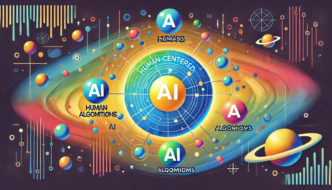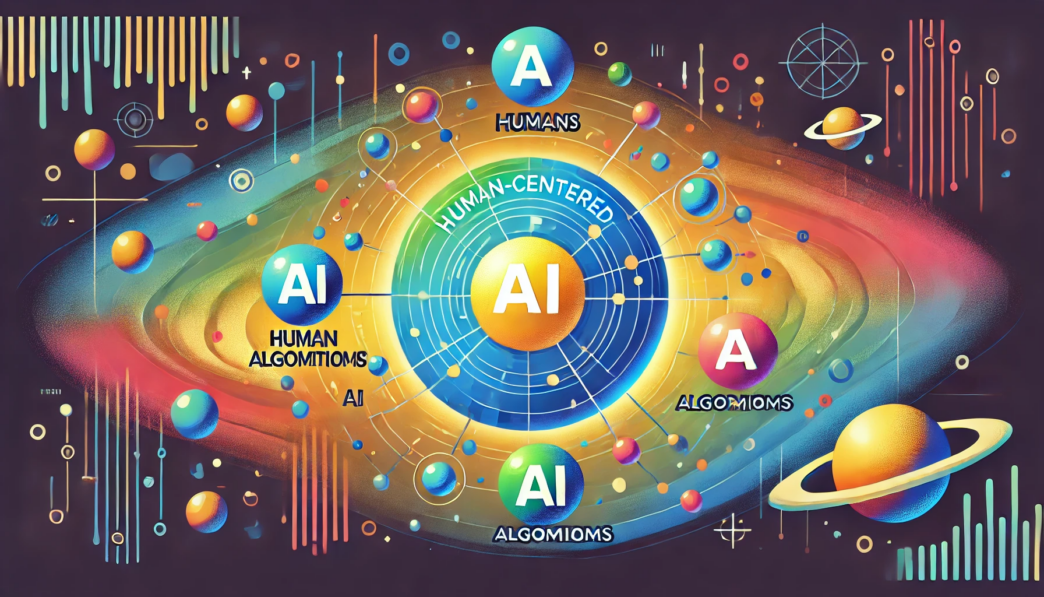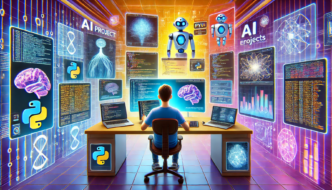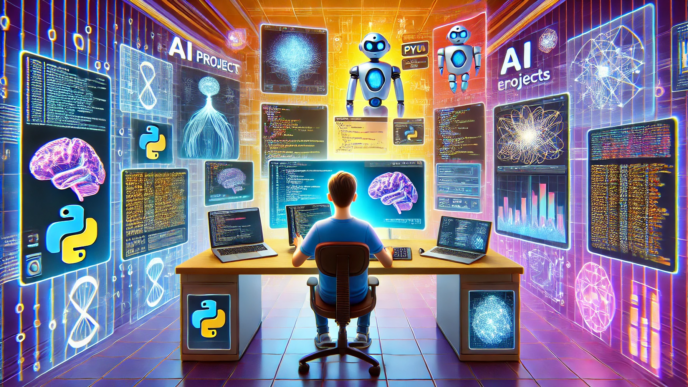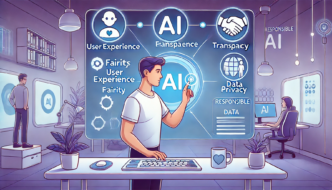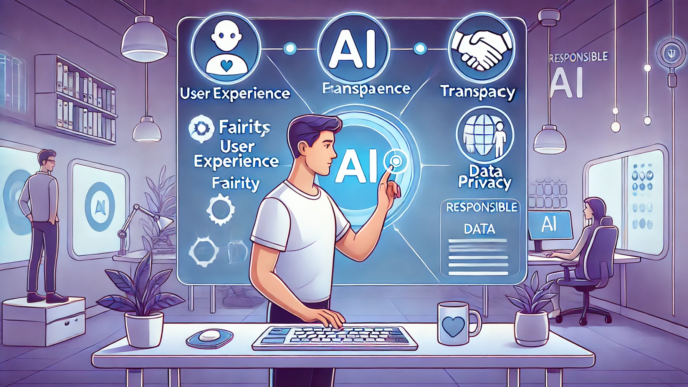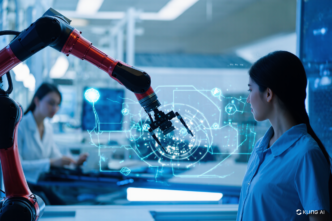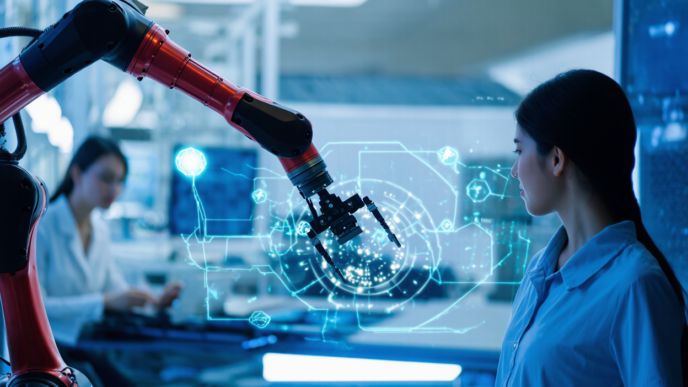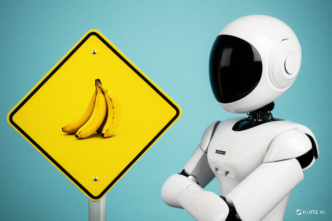Why AI Needs Designers
The swift rise of AI—illustrated by the popularity of ChatGPT and a myriad of similar tools—has effectively shifted power away from end-users. By automating tasks, identifying hidden trends, refining decisions, and producing fresh content, AI leverages data-driven learning without explicit manual programming. This rapid development has already impacted the economy, society, and mental health at large, highlighting the critical need for thoughtful AI design.
“We, graphic designers, have to own up to our role in this emerging predictive world because we have our invisible hand meddling with the controls.”
— Helen Armstrong
This poignant statement comes from Helen Armstrong’s notable book, Big Data, Big Design: Why Designers Should Care About Artificial Intelligence, which examines the important meeting point between design and AI. Designers have the potential to establish ethical frameworks, encourage transparency, and anchor products in human values. In her text—augmented by insights from educators and researchers—Armstrong underscores how a human-centric mindset can guide AI innovation to genuinely serve people.

A Deep Responsibility for Designers
At its heart, design is a human-centered pursuit, aiming to address user needs while acknowledging the broader social environment. Yet as predictive algorithms and machine learning increasingly drive daily interactions, designers wield growing influence over aspects like user data privacy and the ways AI systems learn and adapt.
Human-centric design approaches—ranging from inclusive practices to participatory frameworks—have dominated the design world for years. These same principles are equally crucial in AI development, allowing teams to foresee and reduce potential harms, such as biased datasets or unfair outcomes. Institutions including Stanford’s Human-Centered AI Institute and MIT’s AI initiatives illustrate a global push to integrate these ethical discussions into technology’s core.
However, real-world pressures—like short turnarounds or the “move fast and break things” ethos—can push teams to neglect ethical considerations. This scenario underscores why design experts must take a stand for user well-being, particularly given the breakneck speed of AI’s evolution.
Key AI Capabilities Every Designer Should Know
Drawing on Helen Armstrong’s central themes, the following five AI capabilities highlight how designers can engage to create responsible, user-focused solutions. By combining design thinking with solid ethics, the design community can maximize AI’s potential while safeguarding societal interests.
1. Designing to Power Up Predictions
Machine learning models excel at prediction—using historical data to project future events. From Gmail’s autocomplete, which intuits a user’s next word, to large-scale marketing and supply-chain forecasts, predictive analytics feature in many domains.
- Opportunity: Effective predictions can streamline user experiences by saving time, offering relevant information, and making tasks simpler.
- Pitfall: Without careful oversight, AI-driven predictions may veer into discrimination or manipulation. Designers must integrate ethical checks—such as spotting biased training data—early in the design process.
Humor Note: Should it seem like your AI-suggested texts could star in an infomercial, it might be the training data. A designer’s job is to smooth that out.
2. Designing to Anticipate Future Scenarios
Anticipatory design uses AI insights to stay one step ahead of users. Netflix and Amazon’s recommendation engines are classic examples—providing custom suggestions without explicit prompts. Although this reduces cognitive load, designers must ensure these systems remain open and protect user freedom.
- Opportunity: Lowering friction and offering intuitive experiences that feel tailored.
- Pitfall: Pushing overly controlling or privacy-invading suggestions can damage trust. Designers should always highlight the human element, clarifying how data shapes outcomes.
One proactive approach is having AI simulate possible futures—considering user expectations, social changes, and environmental factors—allowing services and products to adapt over time.
3. Designing to Create Personal Experiences
Personalization aligns interfaces, content, and user interactions with individual conditions. By examining a user’s history or context, AI can serve the most pertinent assistance right when it’s needed. That might involve localized recommendations, targeted notifications, or curated product suggestions.
- Opportunity: Well-structured personalization fosters convenience, engagement, and user delight.
- Pitfall: Privacy concerns are abundant. If underlying data is biased or incomplete, personalizations may be misleading. Designers must embed transparency and ethical guardrails, ensuring personalization stays constructive.
Microsoft’s Seeing AI exemplifies a user-centered approach, describing the environment to people with visual impairments. Properly developed personalization can bring tremendous gains—provided design decisions remain responsible and user-first.
4. Using AI as a Design Material
Designing for AI can be tough because the technology may seem “invisible.” Educators and researchers have created tools to make AI more concrete:
- Delft AI Toolkit
Spearheaded by Philip Van Allen, this no-code, 3D environment helps designers visualize AI processes—data inputs, outputs, and model behaviors—before crafting a real-world prototype. - Match-Making Approaches
Carnegie Mellon’s John Zimmerman guides students to concentrate on an AI tool’s capabilities, rather than how it works technically. This sparks ideas built on present-day generative AI possibilities. - Object-Oriented UX (OOUX)
By prioritizing objects over actions, OOUX maps data flows and functionality in an accessible way, aiding teams (including non-developers) in comprehending intricate AI workflows.
Humor Note: Treat these frameworks like the “training wheels” of AI design tools—better a few wobbles in a test environment than a big crash in a live app.
5. Designing to Reduce AI’s Climate Impact
Although not a direct AI ability, the environmental footprint of AI deserves urgent consideration. Power-hungry processes (model training, large data centers, etc.) raise concerns about resource usage and carbon emissions.
- Opportunity: Designers can advocate for greener principles, streamlined data usage, and dashboards that inform users of each feature’s “AI cost.”
- Pitfall: If ignored, soaring energy demands might push companies to adopt high-stakes solutions (like nuclear energy), igniting debate over equitable and responsible infrastructure management.
Designers, engineers, and policymakers can collaborate to ensure AI grows in a manner that respects both society and the environment.
Conclusion: Time for Action
While AI has shown enormous versatility, it also risks reinforcing preexisting societal inequalities. Without transparent interfaces that reveal how AI choices are reached, users can’t hold systems accountable. Designers occupy a crucial role in bridging this gap—translating complex data algorithms into experiences that safeguard user rights.
The central question remains: will machine learning deepen inequities or serve as a vehicle for greater fairness? Designers can tilt the scales by:
- Planning for Multiple Futures: Develop solutions flexible enough to adapt to uncertain conditions.
- Questioning Long-Term Impacts: Investigate how data-driven decisions might affect disadvantaged groups.
- Promoting Digital Rights: Make privacy settings and consent flows clear and user-friendly.
- Prototyping “Privacy Agents”: Construct new tools that defend user autonomy.
- Supporting Collective Data Projects: Get involved with grassroots datasets that empower communities.
- Tackling Ethics and Bias Early: Design AI so that it genuinely meets human needs, rather than forcing people to fit AI’s limitations.
The future of AI extends beyond coding, pivoting on how human choices shape technology’s role in daily life. By championing innovation tempered with ethics and empathy, designers guide AI toward solutions that enrich people’s lives—and the planet—rather than simply breaking barriers at any cost.
References & Further Reading
- Armstrong, H. (2021). Big Data, Big Design: Why Designers Should Care About Artificial Intelligence.
- Shneiderman, B. (2020). Human-Centered Artificial Intelligence: Three Fresh Ideas.
- Sanders, L. Various writings on user-centered design and research-based approaches.
- Analytis, S. (2023). “How to Design Climate-Forward AI Companies.” Medium.
- Zimmerman, J. Research at Carnegie Mellon on user-centered AI design.
- Prater, S. Resources & podcasts on Object-Oriented UX (OOUX).
- Vox Documentary: Nuclear energy & large tech data centers.
- MIT & EU AI Act: Environmental responsibility & ethical AI standards.
(Disclaimer: Links and articles referenced above offer further details on AI ethics, climate impact, and design best practices.)
